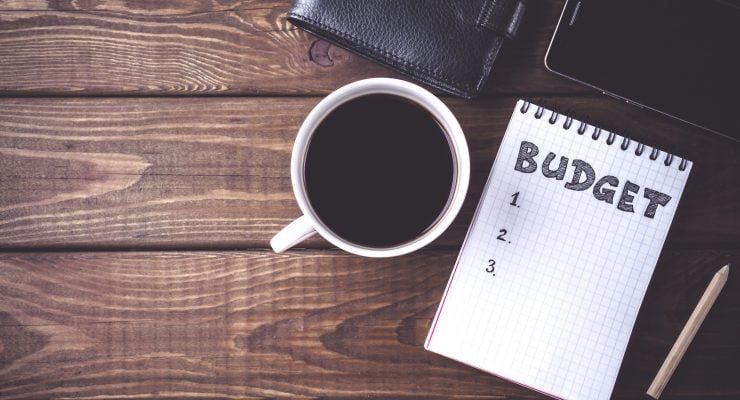Opening a bank account and transferring your money
Opening a bank account in Canada is a quick and easy step—it can be done in 15 minutes.
First, you have to pick a financial institution. Most offer the same services and charge similar fees. There are five large banks in Canada (Bank of Montreal, The Bank of Nova Scotia, The Canadian Imperial Bank of Commerce, The Royal Bank of Canada and Toronto-Dominion Bank) plus a number of credit unions and other financial institutions, such as Desjardins.
Before choosing a bank in Canada, check if your financial institution at home has a partnership with any of them. It can be a good way to skip ATM fees when you use your foreign card to withdraw money in Canada.
The only documents you need to open your bank account are your passport, the WHP stapled in it and a mailing address in Canada. If you choose a simple chequing account, you do not need to provide your SIN—it’s only mandatory to open a savings account (because you have to report interest earned to the Canada Revenue Agency).
You can use a friend’s address or the hostel’s as your Canadian mailing address to receive your debit card and other paperwork, like bank statements.
There is no minimum amount of money required to open a bank account. However, a small initial deposit can help pay for monthly bank fees. It’s also best to have some money available to deal with your initial living expenses in Canada.
Chequing accounts come with a debit card. You will use it to withdraw money directly from your chequing account and pay for goods and services through Interac, the Canadian debit card system.
If you want a credit card, you will have to apply for one. Check if you’re eligible—Desjardins offers WHP holders options but some banks don’t provide temporary work permit holders a credit card.
Canadians seldom use cheques except occasionally to pay rent or tax instalments. They must be ordered for a fee through your bank or a third-party company. Most shops don’t accept cheques as a method of payment.
Debit cards
With your debit card, you can withdraw money directly from your chequing account. If you don’t have sufficient funds, the purchase will be declined, unless you opt for overdraft protection for a fee.
Generally, you can’t use your debit card for purchases online, unless you see the Interac symbol at checkout (which is still fairly rare) or your debit card has the Visa Debit symbol.
Some bars, small restaurants and convenience stores don’t accept debit (there’s usually a sign that says “No Interac”). Most of the time, these establishments have their own non-bank ATM with added fees ($2-$5). It’s cheaper to withdraw cash from your bank’s ATM. Some banks offer unlimited ATM withdrawals, others charge a high fee for out-of-network ATM withdrawals so it may be best to check if your bank has ATMs where you’re planning to travel or live.
Most WHP holders don’t apply for a credit card and simply use their debit card for everyday purchases.
Credit cards
A credit card is a card issued by a financial company (i.e. your bank, another financial institution or even a retail store). It allows you to borrow money against a line of credit up to the card’s credit limit. Credit limits range from a few hundred dollars up $100,000.
Credit cards can be used to make purchase online or in brick-and-mortar stores.
Interest is charged on your purchases, unless you pay the full credit card balance during the “grace period,” which is at least 21 days in Canada. For example, if on January 1 you use your credit card to buy groceries for $100, you won’t be charged interest until January 21. But if you don’t pay the full balance by then, high interest (around 19.9%) will apply.
Don’t use your credit card to withdraw cash—there’s no grace period, interest applies immediately.
Many people use credit cards to earn and redeem points and rewards but pay off their balance regularly to avoid interest. And many more Canadians are drowning in debt—the average Canadian owes $8,500 in consumer debt (excluding mortgages). The bottom line is credit cards can be a great tool for those who are financially responsible.
Credit reports and scores 101
In Canada there are two credit reporting agencies, Equifax and TransUnion. These agencies create credit reports and credit scores for Canadian consumers. They know a lot about you. Do you withdraw money often? Are you paying your bills on time? Are you paying your credit card balance every month? Is your rent late? How many credit cards do you have?
Based on this aggregated data, credit reporting agencies give you a credit score. This number ranges from 300 to 900 and represents your overall credit health. It indicates how likely you are to make payments on time or default on a loan.
Credit scores are very important in North America. The higher the score, the more “reliable” you are supposed to be. It can be checked:
- When you apply for a mortgage or a car loan (the highest scores get the best rates)
- When you’re looking for a job (signs of financial distress that might indicate risk of theft or fraud)
- When you want to rent a place (you can provide it as a proof of your financial reliability)
To get a credit score, you need an established credit history. Ironically, getting a credit card (and making regular payments) is a way to build your credit history over time.
Transferring your savings
In “Last steps before leaving the country” we reviewed two different ways to bring some money to Canada—you can come with cash or with your foreign bank card.
Now that you have a Canadian bank account, you can initiate a transfer from your home bank account to your new bank account in Canada. Depending on financial institutions, it can take as little as five days and as long as two weeks.
You might also consider using an international money-transfer service. TransferMate is a fast and reliable solution with fair exchange rates—and as a pvtistes.net member, you’ll get a good deal too.
Western Union offers faster service but fees are also higher so they are best used in case of emergency. Beware of scams, only deal with people you know and trust when you send and receive money.
The first few weeks in Canada will involve a lot of expenses, so make sure you can access your savings easily and remember that money transfers take time.
To initiate a bank-to-bank wire transfer, give your bank at home the following information:
- Your name and full address
- The name of your Canadian institution
- Your Canadian account number
- The branch number and full address
- The institution number.
- The Swift Code/BIC/IBAN code
- The Routing Number
You will probably stop by your bank to get a statement as a proof of funds before you leave. At the same time, check the info needed to make a transfer to Canada. You may want to increase your overdraft limit as well (just in case) and check your weekly/daily withdrawal limits.
















 Français
Français English
English




0 comments
{{like.username}}
Loading...
Load more